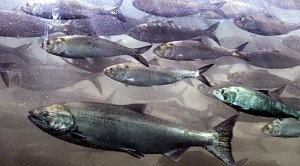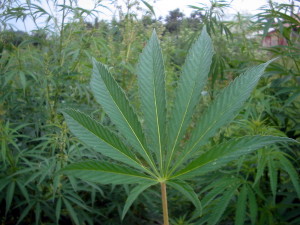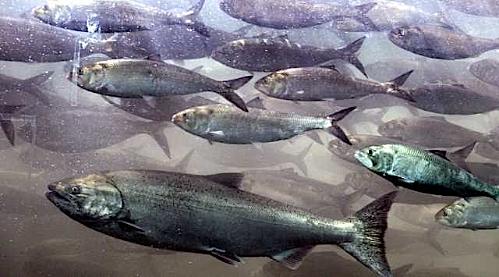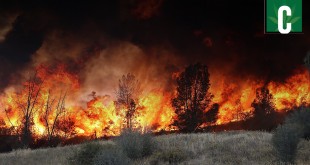Marijuana seems to be growing on people, so to speak, at least in most parts of the country. That’s especially true in California, where polls show voters want to see it legalized.
But not everyone feels quite so up on the plant, or at least on what it’s doing to the local fauna. In Northern California, in the Emerald Triangle, critics say the recent boom in the marijuana industry could spell trouble for an already struggling salmon population.
In Northern California, in the Emerald Triangle, critics say the recent boom in the marijuana industry could spell trouble for an already struggling salmon population.
Cannabis plantations, they say, are using up enormous amounts of of water and pumping pesticides and fertilizers into rivers and other waterways where Chinook salmon and other species spawn.
“I have nothing against people growing dope,” said Dave Bitts, president of the Pacific Coast Federation of Fishermen’s Associations and a commercial fisherman from Humboldt County. “But if you do, we want you to grow your crop in a way that doesn’t screw up fish habitat. There is no salmon-bearing watershed at this point that we can afford to sacrifice.”
Scott Bauer, a biologist who works for the state Department of Fish and Wildlife, told National Public Radio marijuana farmers are using up to 6 gallons per day per plant from small streams and tributaries during the summer growing season.
“When you have 20,000 or 30,000 plants in a watershed, that is a lot of water,” Bauer said.
The Eel River, once home to huge spawning runs of Chinook salmon that have shrunk dramatically, saw 24 of its tributaries run dry last summer, Bauer said, and each of them was being drained to irrigate a weed farm. The result: fewer Chinook, Coho and steelhead salmon in several years, Bauer said.
A large swath of the state is under one of the the worst droughts in 100 years, and Bauer acknowledged that’s a big part of the problem. But so are marijuana growers, he said.
Kristin Nevedal, a founding chairperson of the Emerald Growers Association, doesn’t buy it.
“It’s just so easy to point a finger at cannabis growers because it’s a federally prohibited substance,” Nevedal said. “The truth is, if you flush a toilet in the hills, you’re a part of the problem.”
It’s not illegal in California to draw water from a stream for irrigation, and many farmers do it, Bauer said. But a permit is usually required, and that’s something cannabis growers rarely get, he said.
The North Coast produces more pot than any region in America. The so-called “Emerald Triangle” is made up of Mendocino, Humboldt and Trinity counties. Together, they generate about $1 billion in revenue from weed each year. It has become an extremely insular part of the state, with a widespread distrust of outsiders and those who aren’t connected to the marijuana trade.
 California Marijuana Market Breaking "Marijuana News" from CA
California Marijuana Market Breaking "Marijuana News" from CA


